
The importance of cooling down after you exercise

For a variety of reasons, cooling down after exercise is crucial because it helps your body more smoothly shift from a state of high activity to a state of rest. Here are a few succinct explanations of the significance of cooling off:
Heart rate gradually drops when you exercise because your body needs more oxygen and nutrients to fuel its functioning muscles. A proper cool-down aids in gradually lowering your heart rate, lowering your risk of fainting or unsteady heartbeat.
Avoids Blood Pooling
When you exercise vigorously, your blood vessels enlarge and blood pools in your extremities. Light cooling-down motions support venous return, which helps blood flow back to the heart and averts potential problems like lightheadedness or fainting.
Reduces muscular Stiffness
Gentle stretching performed as part of the cooling down process helps to reduce muscular stiffness and keeps muscles from becoming more tense after activity. This can increase flexibility and lessen the chance of being hurt.
Encourages Waste Removal
Physical activity generates waste products like lactic acid. A cool-down enables a progressive decrease in the accumulation of these waste products, lowering the likelihood of muscle cramping and stiffness.
Cooling down helps your body transition from a stressed to a calm condition, which promotes healing. By lowering stress hormone levels and starting the muscle repair and rebuilding processes, this encourages a quicker recovery.
Benefits for the Mind
A cool-down can be mentally advantageous by offering a moment of mental winding down and relaxation following a strenuous workout. Additionally, it can increase feelings of wellbeing and accomplishment, making exercise more enjoyable.
Injury prevention
Stopping an intense workout abruptly without a good cool-down can result in blood pooling, stiff muscles, and possible injuries. Regular cool-down procedures lower the danger of musculoskeletal issues.
After exercise, it's important to cool down so that your body may gradually enter a resting condition. It helps to lower the possibility of injuries, encourage healing, and offer psychological advantages. A cool-down routine can help you achieve long-term fitness success and improve your general well-being.
Increased Flexibility and Range of Motion: Stretching out while cooling down can gradually increase flexibility. Flexibility gains might benefit your future workouts as well as your daily motions and activities. A greater range of motion can also lessen the risk of injuries brought on by immobility.
Psychological Transition
During the cool-down period, you have the chance to mentally change from the mindset of an intense workout to one that is more relaxed. It enables you to evaluate your performance, establish new objectives, and experience a sense of satisfaction for finishing the workout.
Improved Circulation
During the cool-down, gentle motions help keep blood flowing steadily throughout the body, aiding in the elimination of metabolic waste and lowering the possibility of blood pooling, which can cause discomfort and potential medical problems.
Prevents Post-Exercise Hypotension
After strenuous exercise, a fast drop in blood pressure might happen. Cooling down helps prevent this. The symptoms of this condition, known as post-exercise hypotension, which can lead to lightheadedness or fainting, are lessened by a thorough cool-down.
Exercise is a great method to reduce stress, but the cool-down process provides an additional layer of mental calm. The endorphins that are released during exercise help to elevate your mood, and the cool-down increases this effect, making you feel more at ease and satisfied.
Avoiding Muscle Cramps
Muscles can gradually return to their resting state by cooling down. This aids in preventing unexpected muscular contractions and lowers the possibility of uncomfortable cramps following strenuous exercise.
Injury rehabilitation
The cool-down can be especially helpful if you're healing from a prior injury. It offers a secure, regulated setting for easy stretching and mobility that can help with your recovery.
Better Performance in Future Workouts
Over time, adding cool-downs to your exercise program on a regular basis can increase performance. Your body heals more quickly, and you'll be more ready for your subsequent workout.
After exercise, cooling down has several physical and psychological advantages. It's an essential component of a well-rounded fitness plan; it's not just a means to end your workout. You lower your chance of injury, increase flexibility, and enhance your entire workout experience by letting your body gradually return to a resting condition. To optimize the benefits on your body and mind from each workout, remember to allot time for a thorough cool-down.
Promotes Mind-Body Connection
During the cool-down period, you have the chance to connect with your body and become more aware of how it feels after working out. You may avoid overtraining or pushing yourself too hard by being more aware of your body's needs with the aid of this mind-body link.
Social Interaction
During group exercise sessions, participants can socialize and bond during the cool-down phase. A sense of support and camaraderie can be fostered within the group by cooling off together as a group.
Establishes a Routine, Including a cool-down at the end of your workout helps you form a good habit. Similar to warming up, cooling down becomes a regular component of your workouts, adding to a comprehensive and consistent fitness routine.
Prevents Dizziness and Nausea
Sudden cessation of vigorous exercise can occasionally result in dizziness or nausea because of the sharp drop in blood pressure and heart rate. These discomforts can be lessened and a faster recovery can be ensured with a slow cool-down.
Encourages Consistent Long-Term Exercise, Including a cool-down in your exercise program on a regular basis improves your overall workout experience. You're more likely to persist with your fitness regimen over the long run when you recover from exercises better and suffer fewer injuries.
Injury Prevention in Future Workouts
You may reduce your risk of injury by taking care of your body and cooling down appropriately after each workout. This will help you succeed in your future workouts. You may continually work toward your fitness objectives without experiencing setbacks thanks to a lower risk of injuries.
Reflecting Mindfully, During the cool-down period, you have the ability to think back on your workout, thank yourself for your efforts, and recognise accomplishments. Your self-esteem and motivation may be boosted by this reflection, which will motivate you to continue on your fitness quest.
Better Sleep
Reducing your body's temperature facilitates the change from an awake and active to a relaxed state. Because you're less likely to feel the jitters or pain that can come after a strenuous workout, this can improve the quality of your sleep.
Supports Cardiovascular Health, The cardiovascular system may benefit from a slow cool-down. Allowing your heart rate to gradually drop back to its resting level helps to keep your cardiovascular system in good shape.
Overall Well-Being
Cooling off has benefits for your holistic well-being as well as your physical health. You may feel more balanced, refreshed, and prepared to face the difficulties of the day if you take the time to properly cool down.
After exercise, the cool-down period offers a wealth of advantages that go far beyond simple physical recovery. Cooling down is an essential part of any exercise regimen for a variety of reasons, including injury avoidance, increased flexibility, improved mental health, and better sleep. It makes sure that your fitness journey is more fun and long-lasting by enabling your body and mind to fully benefit from your workout.
Injury detection
You may become aware of any little aches or pains that emerged throughout the workout during the cool-down. By recognizing these early indications of potential injuries, you can address them right away and, if necessary, seek the necessary medical care.
Improves Circulation to Muscles, As you cool down, blood circulates steadily to your muscles, bringing them the vital nutrients and oxygen they need to grow and repair. This may promote muscle growth and assist in the healing process following exercise.
Promotes Post-Exercise Nutrition
Your body is better prepared to absorb nutrients after exercise. A balanced post-workout meal or snack can be consumed during the cool-down to speed up your body's process of replenishment and healing.
Psychological Closure, Just as a warm-up gets your body ready for activity, a cool-down gives the workout a sense of completion. This psychological element can assist you in mentally shifting gears so that you can return to your regular activities with a sense of accomplishment and satisfaction.
Injury Prevention Outside of Exercise
Consistent cool-downs can help prevent injuries in daily activities over the long run. Cooling down can increase flexibility and mobility, which can lower the risk of injury during daily activities or sports that don't include organized exercise.
Prevents Venous Pooling, When circulation is compromised, venous pooling—where blood builds up in the veins—occurs. This condition can be avoided by properly cooling down with moderate motions, which also lessens discomfort and the possibility of problems.
Cooling Effect
Your body temperature remains raised after a vigorous workout. By allowing your body to cool off, you may eliminate extra heat and return it to a healthy temperature, avoiding problems brought on by overheating.
Continued Injury therapy If you are healing from an earlier injury, the cool-down period can be added to your therapy schedule. During cooling down, controlled and gentle motions can help preserve development and avoid setbacks.
Encourages Mindfulness
The cool-down gives you a chance to focus on being thoughtful and appreciative of your body's strengths. This admiration encourages a healthy outlook on fitness and self-care.
Improved Overall Exercise Performance, Over time, adding a cool-down to your regimen can improve your overall exercise performance. You can exert more effort in following workouts because to better flexibility, decreased muscular soreness, and improved recuperation.
Positive Example:
If you exercise with others, your dedication to cooling down can inspire your friends or other workout partners to give post-workout recuperation same priority.
The process of cooling down after exercise is essential to the workout process and should not be overlooked. It provides advantages that touch on physical, mental, and emotional well-being, adding to a comprehensive and fruitful fitness journey. You can significantly improve your general health and exercise performance by scheduling time for a healthy cool-down, regardless of whether you work out hard or moderately.

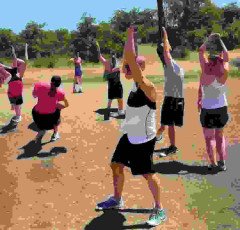











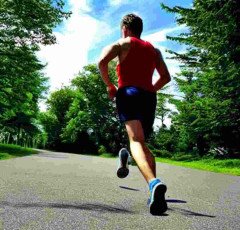


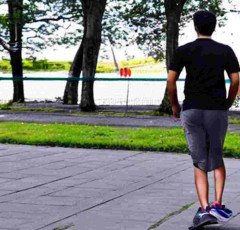




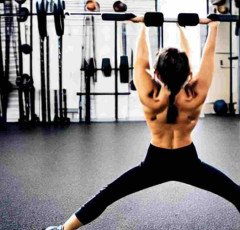






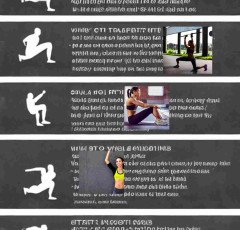


























































 RPM 3.0
RPM 3.0  Wristbands
Wristbands  Hello Theme
Hello Theme  Wireless Gaming Mouse
Wireless Gaming Mouse  Hot Bags For Pain Relief
Hot Bags For Pain Relief  Best Phone
Best Phone  Digital Voice Recorder
Digital Voice Recorder  Unreal Engine 5 For Beginners Learn The Basics Of Virtual Production
Unreal Engine 5 For Beginners Learn The Basics Of Virtual Production  Apple iPhone
Apple iPhone  Home Decor Items
Home Decor Items  NordLocker
NordLocker  Amazon Best Selling Products
Amazon Best Selling Products  One World Collection
One World Collection  NordVPN
NordVPN  ELECTRONIC ACCESSORIES
ELECTRONIC ACCESSORIES  LCD Writing Tablet
LCD Writing Tablet  Graphics & Design
Graphics & Design  Favorite Company (Cuelinks)
Favorite Company (Cuelinks)  1150+Trendy kids coloring pages Bundle
1150+Trendy kids coloring pages Bundle  ASPINAL LONDON
ASPINAL LONDON  Echo Dot - Smart speaker with Alexa
Echo Dot - Smart speaker with Alexa  Best Home Appliances
Best Home Appliances  Online Technology Classes
Online Technology Classes  Men Clothing
Men Clothing  TitTok Revolution
TitTok Revolution  Top Rated From Amazon
Top Rated From Amazon  Unlimited access to classes on illustration, photography, design, film, music
Unlimited access to classes on illustration, photography, design, film, music  Wall Lamp
Wall Lamp  Dual USB Car Charger
Dual USB Car Charger  ASUS Laptop
ASUS Laptop  Hanging Lights For Living Room
Hanging Lights For Living Room  Samsung Mobile
Samsung Mobile  Kitchen Daily Use
Kitchen Daily Use  Motion Sensor Light
Motion Sensor Light  Healthy Ingredients
Healthy Ingredients  Prime Video
Prime Video  BEST SELLER TOP10
BEST SELLER TOP10  SEO Checklist
SEO Checklist  Acer Laptop
Acer Laptop  Women Fashion
Women Fashion  NordPass
NordPass  Adidas Shoes
Adidas Shoes  iPhone cable
iPhone cable  Wireless Bluetooth Earphones
Wireless Bluetooth Earphones  Smart Doorbell
Smart Doorbell  Artificial Intelligence
Artificial Intelligence  Stylish Sneakers by Red Tape
Stylish Sneakers by Red Tape  Best Sellers On Amazon
Best Sellers On Amazon  Door Handle Collection
Door Handle Collection  Essentials for Gamers
Essentials for Gamers  Best Robotic Vacuum Cleaners
Best Robotic Vacuum Cleaners  Crocs
Crocs  Best Selling Books
Best Selling Books  Air Purifier for Home
Air Purifier for Home  Online Marketing
Online Marketing  SOFAS
SOFAS  Only For The United States
Only For The United States  Dell Laptop
Dell Laptop  Creative Brief For Video Shoot
Creative Brief For Video Shoot  The Secret Email System
The Secret Email System  Duke T Shirts
Duke T Shirts  Pet Care Products
Pet Care Products  Bathroom Mirrors
Bathroom Mirrors  HP Laptop
HP Laptop  Rakhi
Rakhi  Kitchen Tap
Kitchen Tap  Sennheiser
Sennheiser  The Click Engine
The Click Engine  Realme Smart Phone
Realme Smart Phone  Puma (Clothing & Accessories)
Puma (Clothing & Accessories)  Smart Watches
Smart Watches  4k Projector For Home
4k Projector For Home  All Wireless Products
All Wireless Products 


















